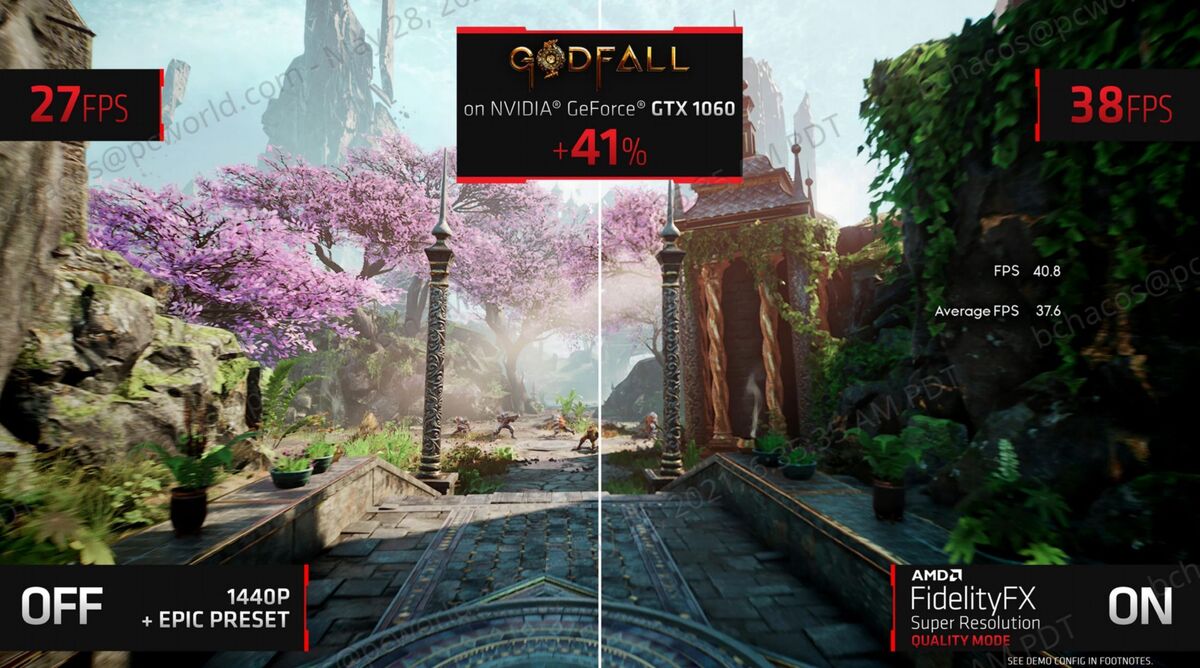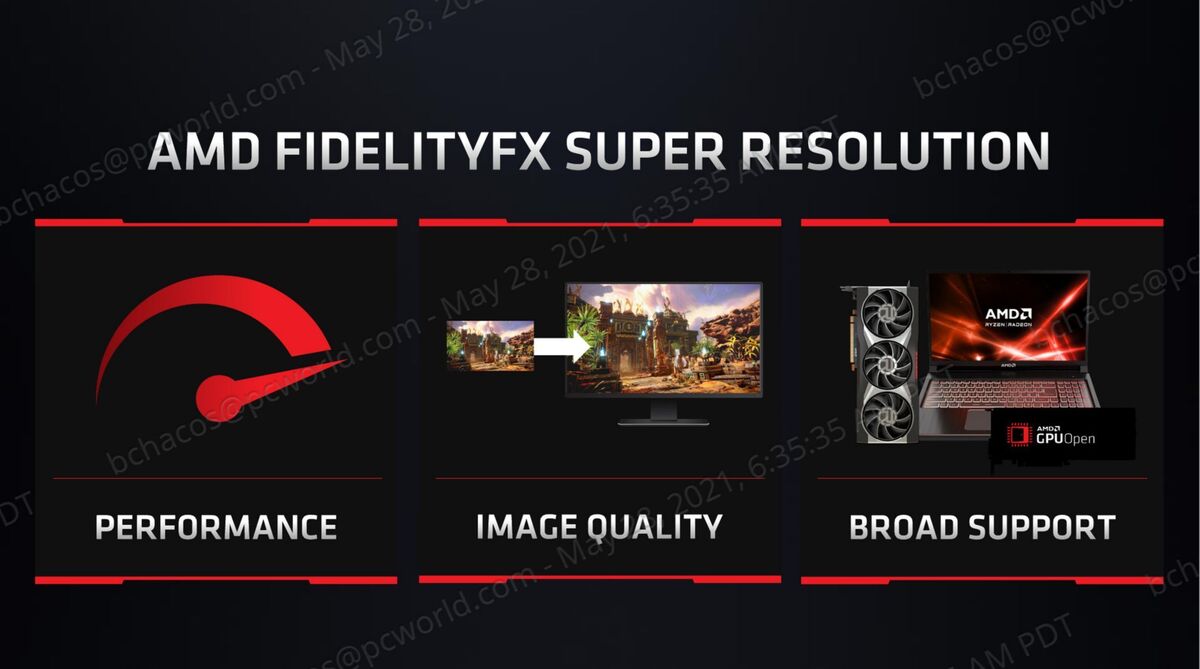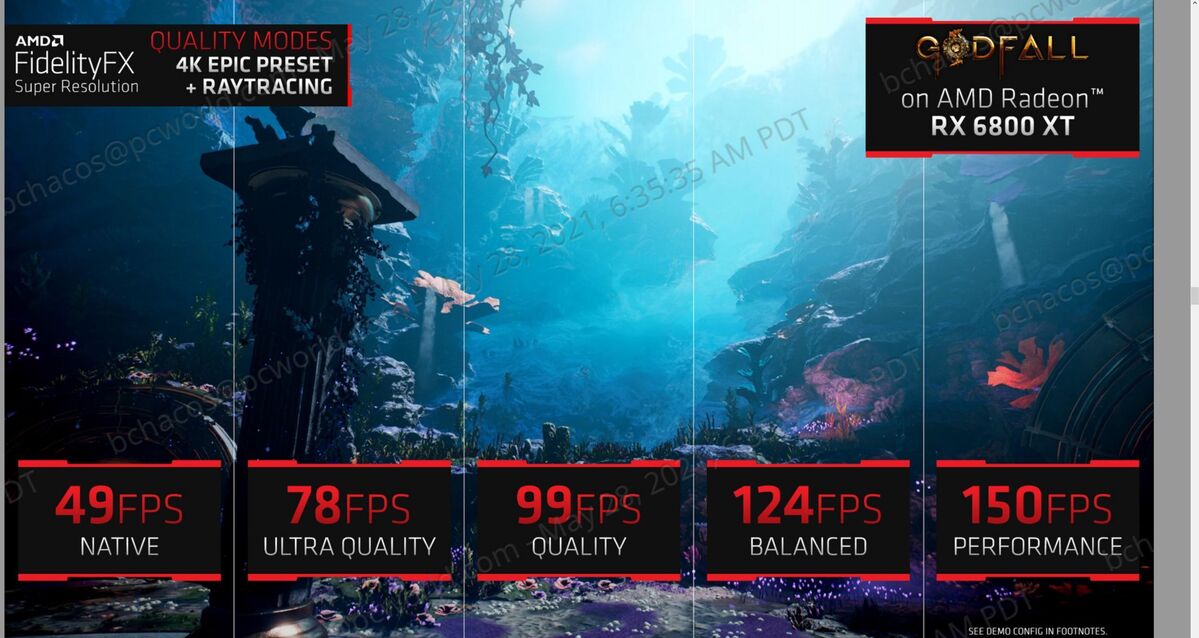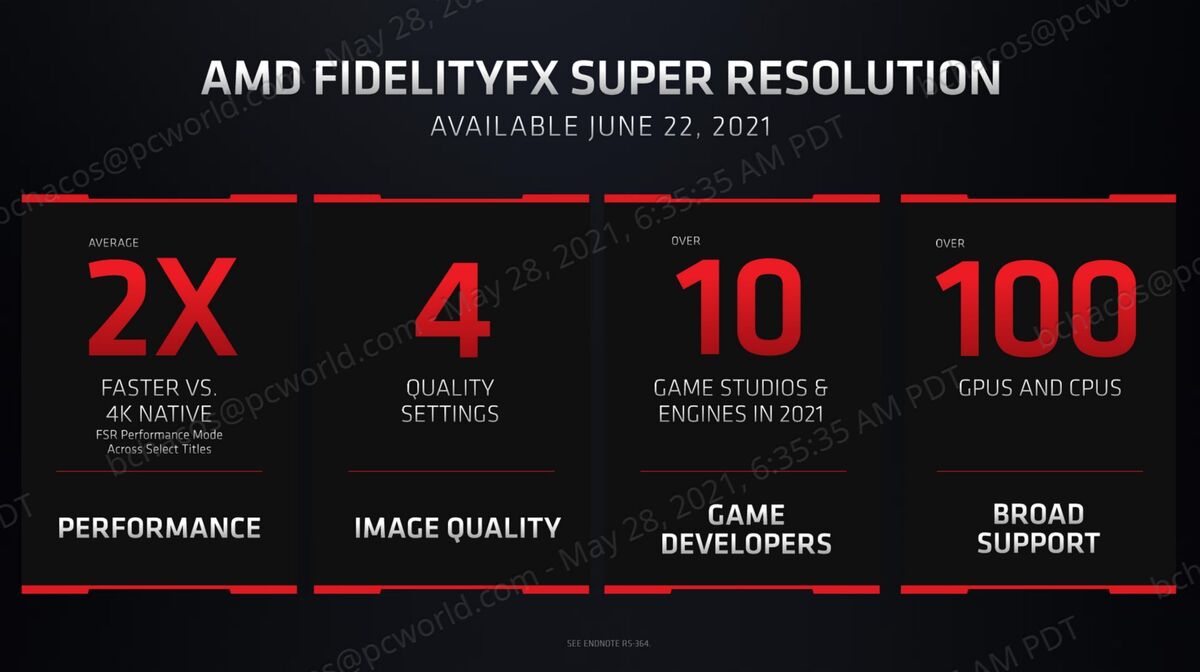AMD FidelityFX Super Resolution is Radeon's DLSS rival - moorewhor1988
Sound out hello to Radeon's long-awaited answer to Nvidia's DLSS technology. AMD finally took the wraps inactive its FidelityFX Super Result feature film during its Computex 2021 keynote along Monday night. The company promised busy twice your GPU's native performance when you need extra gaming firepower (like when you activate ray trace, for example) and the ability to make almost late nontextual matter cards even faster in supported games—even if you're running a GeForce GPU. Better thus far, it's future soon, on June 22.
The feature's open nature makes it a huge deal to all Microcomputer gamers—not just Radeon owners—during a time when nobody can buy graphics card game at sane prices. Free unscheduled functioning when you're struggling to make ut with an older GPU will certainly prove wanted so. It too drives home AMD's ongoing commitment to more open standards that profit the wider PC community, shadowing in the footsteps of other AMD initiatives like FreeSync monitors and GPU Artless.
 AMD
AMD AMD's FidelityFX Super Resolution existence secondhand to speed up Nvidia's older GTX 1060 in Godfall.
In a briefing with PCWorld prior to the tonic, Radeon main Robert Falcon Scott Herkelman drove that point family by showing FidelityFX Tiptop Resolution boosting the performance of Nvidia's older GTX 1060 by a whopping 41 per centum in Godfall, and that wasn't true with FSR's fastest form active. In my X-plus of covering PC technology, I can't recall a singular other time that a major vendor successful an movement to show a new sport making its competitor's computer hardware faster.
By contrast, Nvidia's excellent Abyssal Learning Super Sampling (DLSS) technology works exclusively happening newer GeForce RTX-branded graphics cards that hold in proprietary AI tensor cores. Even Nvidia's personal GTX GPUs can't share. FidelityFX Super Resolution, on the other hand, works on all AMD graphics cards from the Radeon RX 500-series on upwardly, as well as Nvidia's GTX 10-serial GPUs and newer, Herkelman told PCWorld. Hallelujah.Update:A few days after the keynote, AMD same that it's bringing FSR to the popular Radeon RX 470 and 480 nontextual matter cards as healthy, though the company didn't mention any different 400-serial publication GPUs.
 AMD
AMD The cornerstones of AMD's approach to FSR.
FSR differs from DLSS in other tangible ways as well. Nvidia's DLSS relies on machine learning and temporal upsampling to drive its performance-boosting feature. The sunrise Temporal Super Resolution coming to Epic's Unreal Engine 5 besides revolves around temporal upsampling (thence the name). FidelityFX Topnotch Resolution utilizes spatial upsampling instead. Herkelman didn't go into specific discipline details about how FSR works low-level the hood, merely typically, spatial upsampling has a GPU create a frame at a lower declaration, then renders it onscreen at a higher resolution, exploitation interpolation techniques to fill in the blank pixels.
DLSS also starts with a lower-resolution image that's upsampled to fit your screen, but it uses AI comparison against a tops-high-resolution "ground truth" image on with temporal feedback to fill in the blanks. The first generation of the technology looked a little muzzy and smeared onscreen. The practically much popular DLSS 2.0 works care black wizard, specially when you use it with settings enabled that render at a higher base closure, so the technology doesn't need to "fill in the blanks" as much.
 AMD
AMD FidelityFX Superior Resolution offers four quality levels with varying levels of performance and visual quality.
AMD's Fidelity FX will also offer multiple quality levels, Herkelman told PCWorld. Four, to be correct: Ultra Quality, Quality, Balanced, and Carrying out. FSR settings toward the left of that list favor fidelity Sir Thomas More, while Performance may sacrifice some eye candy for more peeled speed. Each quality level deploys spatial upsampling in different ways to achieve their results. Herkelman said that Extremist Timbre FSR is "same exchangeable" and "pretty close" to native rendering while calm providing a very good carrying into action bump, as you can see in the slide above. Along the other end of the spectrum, Herkelman aforesaid that Operation mode can offer skyward to doubly the native performance at 4K resolution.
AMD hopes that the more-open FidelityFX Super Resolution becomes the upsampling technology of choice over DLSS, but don't expect to flip information technology on in every game when the engineering debuts on June 22. Herkelman aforementioned that over 10 game studios and engines will backing FSR at few point in 2021 (without noting specifics) but added that there will be a "wondrous total Thomas More in 2022."
 AMD
AMD It's finally (almost) Hera.
We'll have to see how the technology handles in the real world, but if FidelityFX Super Resolution proves successful or even retributory good enough, it could truly long pillow Radeon electron beam trace performance—AMD's John Major weak speckle against Nvidia's RTX 30-series GPUs. And FSR could make everybody's art cards faster in the games that backup it. Exciting times ahead.
Editor's note: This clause originally published on May 31, but was updated to include entropy about AMD also bringing FSR to Radeon RX 400-series GPUs.
Source: https://www.pcworld.com/article/394644/amd-fidelityfx-super-resolution-is-radeons-dlss-rival.html
Posted by: moorewhor1988.blogspot.com


0 Response to "AMD FidelityFX Super Resolution is Radeon's DLSS rival - moorewhor1988"
Post a Comment